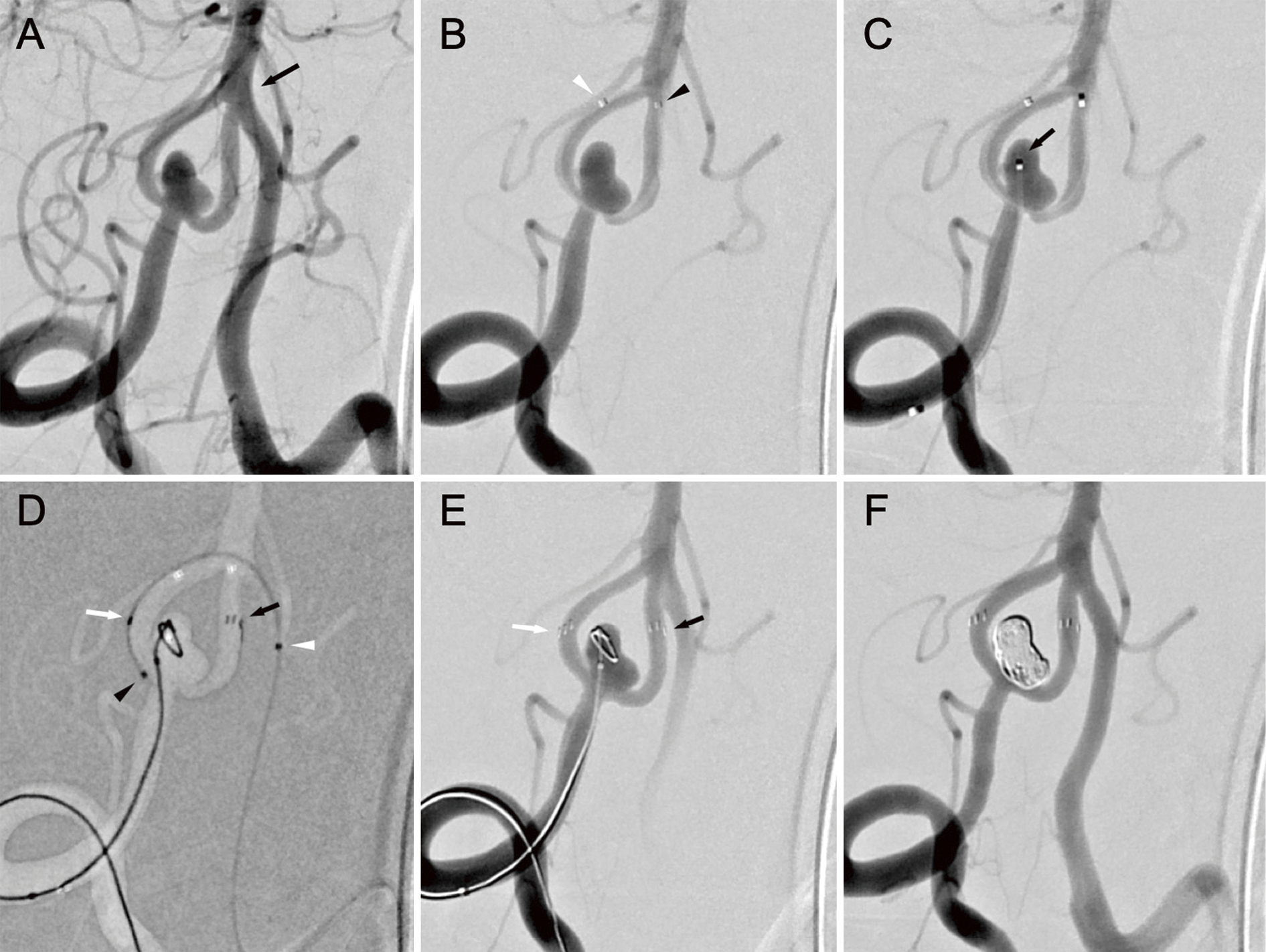- 著者
- Haruka MIYATA Futa NINOMIYA Tomoaki FUJITA Yutaka NONOYAMA Takuya NAKAZAWA Shigeharu FUKAO
- 出版者
- The Japan Neurosurgical Society
- 雑誌
- Neurologia medico-chirurgica (ISSN:04708105)
- 巻号頁・発行日
- pp.2022-0309, (Released:2023-03-31)
- 参考文献数
- 23
Horizontal stenting protects the aneurysm neck with stent deployment across the aneurysm neck via the circle of Willis. A saccular aneurysm associated with intracranial arterial fenestration is very rare. Herein, we describe the first case of an unruptured aneurysm related to intracranial arterial fenestration treated with horizontal stenting. A 23-year-old woman presented with a 7-mm broad-necked aneurysm at the fenestration of the right intracranial vertebral artery (VA), which was incidentally found on magnetic resonance imaging. The patient underwent endovascular treatment with horizontal stenting via the vertebrobasilar junction from the contralateral left VA, followed by coil embolization using a jailed microcatheter from the ipsilateral right VA. The procedure was finished with sufficient embolization, and no complications occurred. Horizontal stent delivery via the vertebrobasilar junction for coil embolization of a broad-necked aneurysm arising from the fenestration of the VA is a safe and effective therapeutic strategy.
- 著者
- Hayato TAKEUCHI Kazuhide IWAMOTO Mao MUKAI Tomoaki FUJITA Hitoshi TSUJINO Yoshihiro IWAMOTO
- 出版者
- 社団法人 日本脳神経外科学会
- 雑誌
- Neurologia medico-chirurgica (ISSN:04708105)
- 巻号頁・発行日
- pp.cr2012-0376, (Released:2013-11-08)
- 参考文献数
- 27
- 被引用文献数
- 1 4
Pathological laughing, one subgroup of psuedobulbar affect, is known as laughter inappropriate to the patient’s external circumstances and unrelated to the patient’s internal emotional state. The authors present the case of a 76-year-old woman with no significant medical history who experienced pathological laughing after subarachnoid hemorrhage (SAH) due to rupture of an aneurysm, which was successfully treated with craniotomy for aneurysm clipping. In the acute stage after the operation she suffered from severe vasospasm and resulting middle cerebral artery territory infarction and conscious disturbance. As she regained consciousness she was afflicted by pathological laughing 6 months after the onset of SAH. Her involuntary laughter was inappropriate to the situation and was incongruent with the emotional state, and she could not control by herself. Finally the diagnosis of pathological laughing was made and treatment with sertraline, a selective serotonin reuptake inhibitor (SSRI), effectively cured the symptoms. Her pathological laughing was estimated to be consequence of infarction in the right prefrontal cortex and/or corona radiata, resulting from vasospasm. To the authors’ knowledge, this is the first report of pathological laughing after aneurysmal SAH. The authors offer insight into the pathophysiology of this rare phenomenon. Effectiveness of sertraline would widen the treatment modality against pathological laughing.
